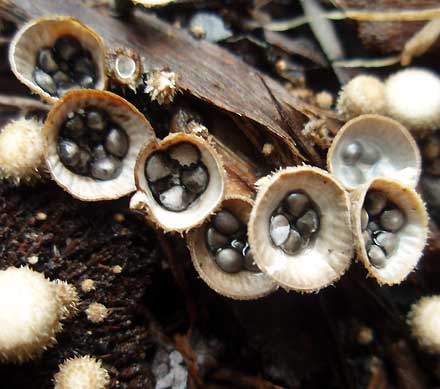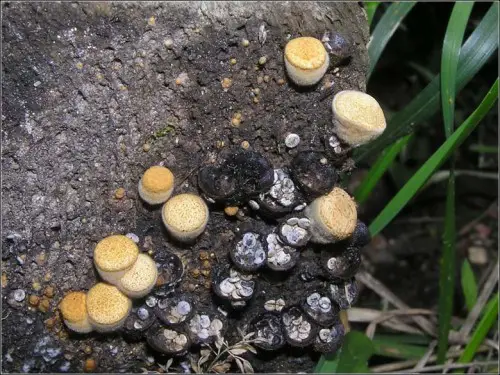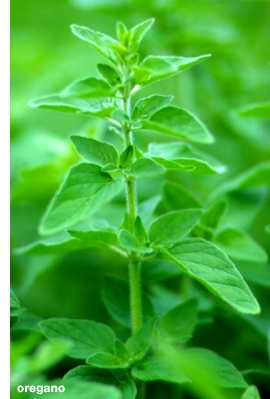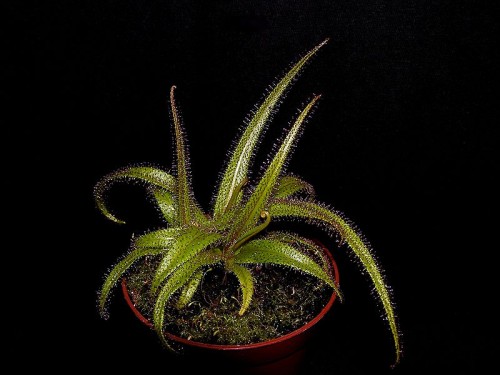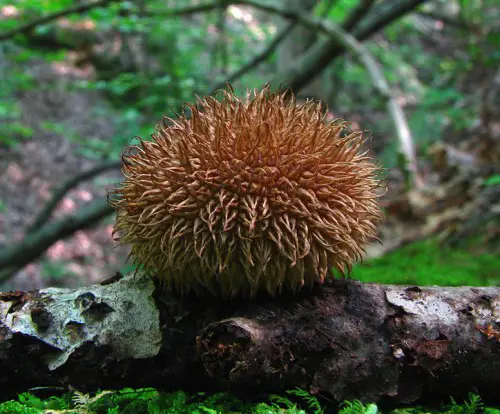Nidulariaceae
The Nidulariaceae or also known as bird’s nest fungi where its bodies look a lot like tiny egg-filled birds’ nests complete with tiny “eggs”. The plant feeds on decomposing organic matter such as wood and in the surrounding soils enriched with wood chips or bark mulch. The Nidulariaceae is segregate into five different genera within its family species which include Crucibulum (light tan to cinnamon-colored with 1.5mm to 10 mm wide and 5mm to 12mm tall), Cyathus (brown to gray-brown in color with 4mm to 8mm wide and 7mm to 18 mm tall), Mycocalia (Small barrel- to lens-shaped with 0.5mm to 2 mm wide), Nidula (white, grey, buff, or tawny cup- or urn-shaped with 3mm to 8mm in diameter and 5mm to 15 mm tall), and Nidularia (a well-formed cup, thin and fragile with 0.5mm to 6mm in diameter and 0.5mm to 3 mm tall). All of the species are differentiates by its morphology and peridiole structure. The plant was first mentioned by Flemish botanist Carolus Clusius in Rariorum plantarum historia way back in 1601.
The Nidulariaceae has a gasteriod fruiting body (also known as peridia) where its spores developed internally in an angiocarp. In other words, the plant grows together in groups but not joined together. The fruiting bodies are usually small for example, approximately 5mm to 15mm wide and 4mm to 8mm high containing one to numerous disc-shaped peridioles which looks like tiny eggs and it contains spores that comes in shiny white, black-grey or dark brown colors.
This type of bird’s nest fungi are normally found in New Zealand where it lives on decaying wood, small twigs, tree fern debris and sometimes on animal dung, while in a more developed surrounding, it grows on sawdust, woodchip, or well enriched soil, and landscaping timber.
Hydraulic pressured water can be used to disperse the bird’s nest fungi’s peridioles or by using rainwater or drop some water off foliage above and then drip it onto the splash cup. Whenever the water hits the bottom of the cup, it uses the force of the water to disperse the peridioles as far as a meter away. This dispersion allows the peridioles to expand its growth to other area because when the peridioles land on solid object like a leaf or twig, they will be attached to them in a few ways depending on the species.
The Nidulariaceae’s peridioles are normally sticky especially the genera type of Nidularia and Nidula. As for the in genera Cyathus and Crucibulum, their peridioles comes with a coiled cord together with a sticky end where in the end it will be attached to the splash cup. Normally, when you eventually splashed the peridiole, the end of the coil will snap thus providing the peridiole with a 100 mm tail .This will enable to grow and catches up with any stem or twig in its path before wrapping the peridiole around the plant.
